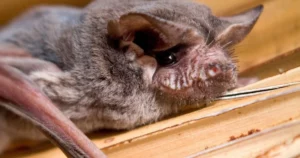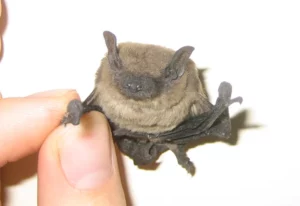
Bats are truly incredible creatures that inhabit the Dallas-Fort Worth area. In this article, we will delve into the fascinating world of bats, exploring their diversity, unique characteristics, and debunking common myths associated with them. We will also provide valuable insights on how to identify signs of a bat infestation, where bats like to roost, and how to safely remove them from your property. Additionally, we will offer tips on bat-proofing your home to prevent future encounters. Let's embark on this enlightening journey to discover the wildlife diversity that bats bring to Dallas-Fort Worth!
Bats are often misunderstood creatures, surrounded by a veil of mystery. However, they play a vital role in our ecosystem and deserve our admiration. Let's explore the diversity of bat species found in Dallas-Fort Worth and unveil their unique characteristics.
Dallas-Fort Worth is home to a wide range of bat species, each with its own distinct attributes. From the Mexican free-tailed bats to the evening bats, the region boasts an impressive array of bat species. These bats differ in size, habitat preferences, and behavior, contributing to the rich wildlife diversity of the area.

One of the most fascinating bat species found in Dallas-Fort Worth is the Mexican free-tailed bat (Tadarida brasiliensis). These bats are known for their incredible speed and agility, as they can reach speeds of up to 99 miles per hour during flight. They have a wingspan of about 11-12 inches and are capable of covering long distances in search of food.
Another notable bat species in the region is the evening bat (Nycticeius humeralis). These bats are relatively small, with a wingspan of around 9-10 inches. They are known for their distinctive call, which sounds like a series of high-pitched clicks. Evening bats are often found roosting in trees or buildings, and they primarily feed on insects such as moths and beetles.

One of the most captivating aspects of bats is their ability to navigate and hunt using echolocation. By emitting high-pitched sounds and interpreting the echoes, bats can detect objects and prey with remarkable precision. This remarkable adaptation allows them to navigate in complete darkness and locate their prey with astonishing accuracy.
In addition to their echolocation abilities, bats have other unique characteristics that set them apart from other mammals. Their wings, which are modified forelimbs, allow them to achieve flight in a way that no other mammal can. The bones in their wings are elongated and thin, covered by a thin membrane of skin. This wing structure enables bats to perform intricate aerial maneuvers and fly with exceptional agility.
Furthermore, bats are vital pollinators, helping to maintain the balance of plant species in the region. As they feed on nectar from flowers, they inadvertently transfer pollen from one flower to another, facilitating the process of plant reproduction. This mutualistic relationship between bats and plants is crucial for the survival of many plant species, including some economically important ones.
Bats also play a crucial role in controlling insect populations. They are voracious insectivores, consuming vast amounts of mosquitoes, moths, beetles, and other pests. In fact, a single bat can consume hundreds of insects in a single night, providing a natural and environmentally friendly pest control solution.
In conclusion, the world of bats is truly fascinating and full of wonders. From their diverse species to their unique characteristics and ecological contributions, bats are a remarkable group of animals that deserve our appreciation and protection. So, the next time you see a bat flying overhead, remember the important role it plays in maintaining the balance of nature.
For too long, bats have been shrouded in myths and misconceptions. It's time to set the record straight and understand the true nature of these remarkable creatures.
Bats are not bloodthirsty creatures seeking human blood. In fact, the vast majority of bat species feed on insects or fruits. Bats are gentle and shy creatures that prefer to avoid human contact. They are highly unlikely to attack unless provoked or cornered.
Contrary to popular belief, bats are not blind. While some bat species have reduced visual capabilities due to their reliance on echolocation, they are not sightless. Bats are intelligent creatures that have adapted to their nocturnal lifestyle over millions of years.
It is fascinating to explore the unique adaptations that bats possess. One remarkable feature is their ability to navigate in complete darkness using echolocation. By emitting high-frequency sound waves and listening to the echoes that bounce back, bats can create a detailed mental map of their surroundings. This remarkable skill allows them to detect and capture prey with remarkable precision, even in the darkest of nights.
Another interesting aspect of bat behavior is their roosting habits. Bats are known to roost in a variety of locations, including caves, trees, and even man-made structures such as buildings and bridges. These roosts provide bats with shelter and protection from predators. Some bat species form large colonies, consisting of hundreds or even thousands of individuals, while others prefer to roost alone or in small groups.
Furthermore, bats play a crucial role in maintaining the balance of ecosystems. As voracious insectivores, bats help control populations of insects such as mosquitoes, moths, and beetles. In fact, a single bat can consume thousands of insects in a single night, making them valuable allies in pest control. Additionally, bats also serve as pollinators for many plant species, including some economically important crops such as bananas and mangoes.
Despite their ecological importance, bats often face numerous threats. Habitat loss, pesticide use, and climate change are some of the factors contributing to the decline of bat populations worldwide. Conservation efforts are crucial to protect these fascinating creatures and ensure their survival for future generations.
While bats have many positive attributes, having them take up residence in your home can be problematic. It's essential to be able to recognize the indicators of a bat infestation.
If you notice an increase in bat activity around your property, especially during dusk or dawn, it might be a sign that bats have found their way in. Other signs include the presence of guano (bat droppings) or a distinct musty odor. Additionally, bats may create small holes or stains on your walls or ceilings.
Bats prefer roosting in dark, secluded areas. Common spots bats may choose as their roosting sites include attics, crawl spaces, or gaps in your roof. If you observe bats entering or exiting these areas, it is a clear indication that they have made your property their home.
Now that we know how to identify a bat infestation, let's explore the common locations where bats seek shelter in and around your home.

Bats are skilled at squeezing into tight spaces and may exploit small openings in your home's exterior. Gaps in siding, loose shingles, or even openings around pipes and utility lines can serve as entry points for bats. They are also known to take refuge in chimneys, barns, or old buildings with accessible entryways.
Aside from man-made structures, bats also favor natural habitats such as caves, cliffs, and dense vegetation. These areas provide the necessary protection and ideal roosting conditions for bats. By familiarizing yourself with their preferred environments, you can gain insight into how to deter them from your property.
If you have confirmed the presence of bats in your home, it's crucial to handle their removal safely and humanely.
Before attempting any bat removal, it is advisable to consult with professionals experienced in handling bat exclusions. They will employ humane techniques that ensure the bats' well-being while effectively removing them from your property. Using exclusion devices, such as one-way valves, allows bats to exit but prevents re-entry, ensuring a successful and compassionate removal process.
Bat removal can be a complex process that requires specific knowledge and expertise. Enlisting the help of professionals who specialize in bat exclusion and relocation is the best course of action. These experts will ensure the safe removal of bats while taking the necessary steps to prevent future infestations.
Once you have successfully removed bats from your property, it's crucial to take preventive measures to avoid future encounters.
Inspect your home for any potential entry points and seal them off. Use materials such as caulk, screens, or weatherstripping to close gaps and openings that bats can exploit. Pay close attention to areas around vents, pipes, windows, and doors. By denying bats access to your home, you can effectively prevent future infestations.
Concluding the Wildlife Diversity: Unveiling the Fascinating World of Bats in Dallas-Fort Worth
In conclusion, bats offer a fascinating glimpse into the wildlife diversity of the Dallas-Fort Worth area. By understanding their unique characteristics, debunking common myths, and learning how to identify signs of infestation, we can coexist with bats harmoniously. Safely removing bats from our properties and implementing bat-proofing measures will ensure a peaceful and bat-friendly environment for both humans and these incredible creatures.